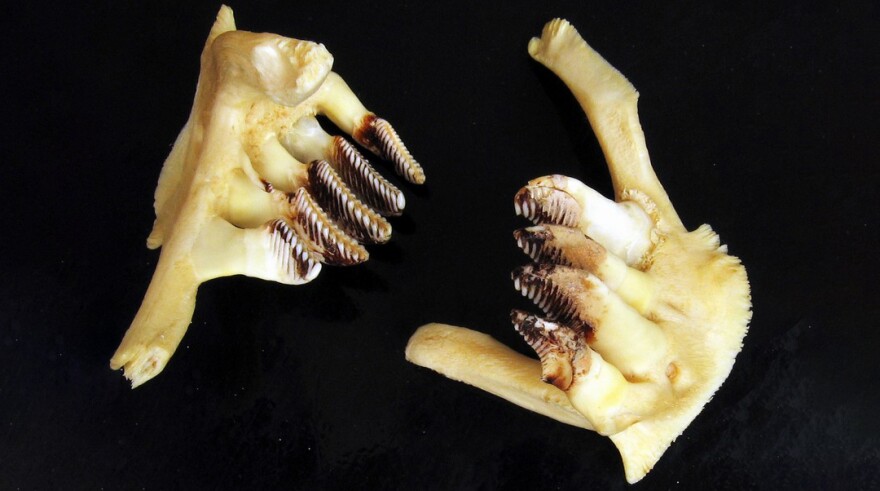A listener finds part of the remains of a grass carp on the beach. This Asian species has "pharyngial teeth."
In the United States, the species was first imported in 1963 from Taiwan and Malaysia to aquaculture facilities in Alabama and Arkansas. The first release is believed to have been an accidental escape in 1966 from the US Fish and Wildlife Service's Fish Farming Experimental Station in Stuttgart, Arkansas, followed by planned introductions beginning in 1969. Subsequently, there have been widespread introductions; by the 1970s the species had been introduced to 40 states, and it has since been reported in 45 of the country's 50 states. In 2013 it was determined to be reproducing in the Great Lakes Basin. It is still stocked in many states as an effective biocontrol for undesirable aquatic vegetation, many species of which are themselves introduced.




